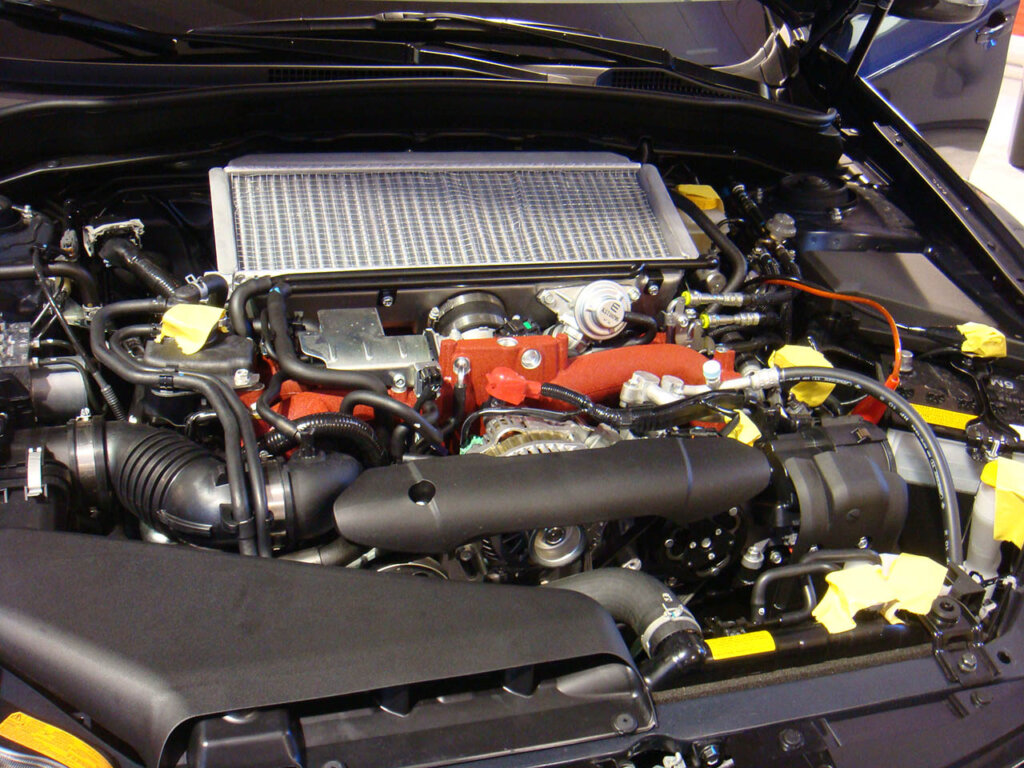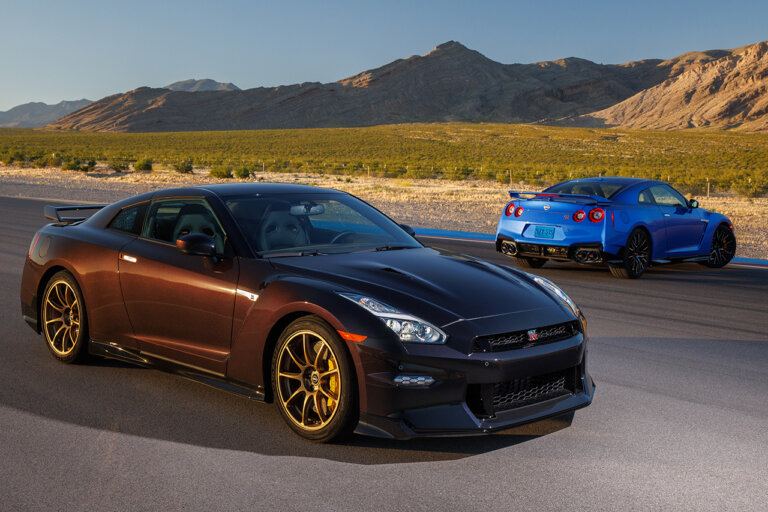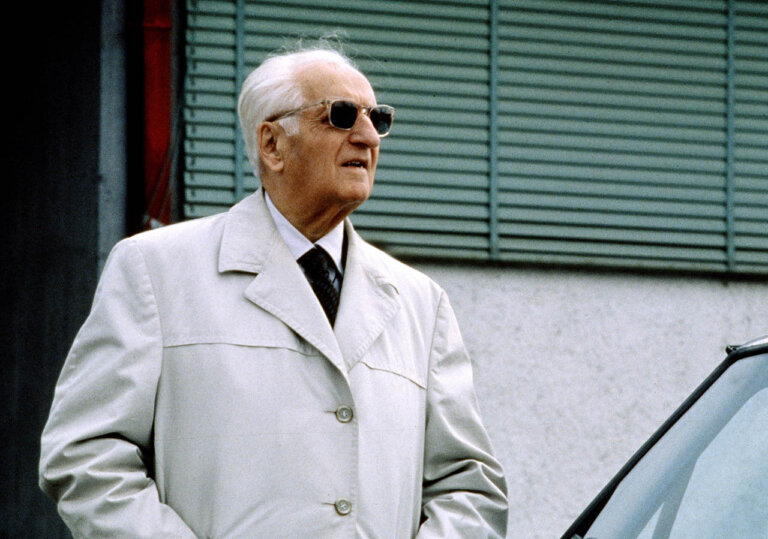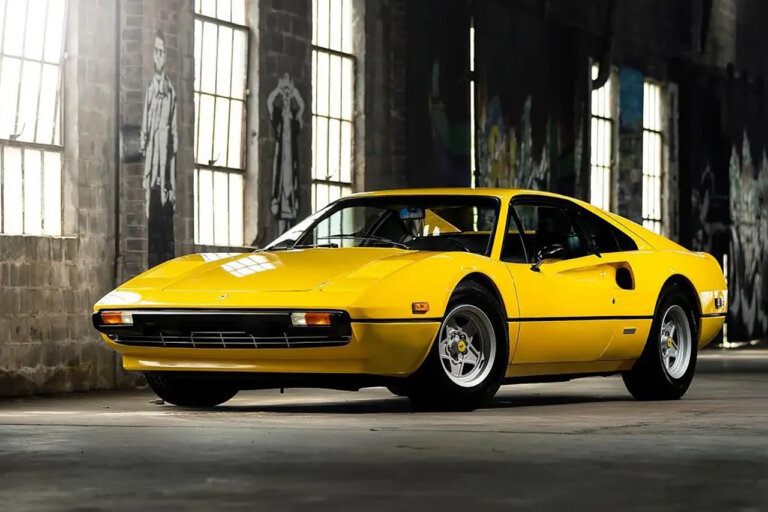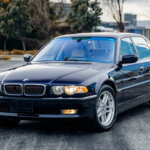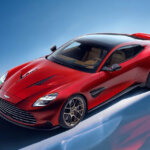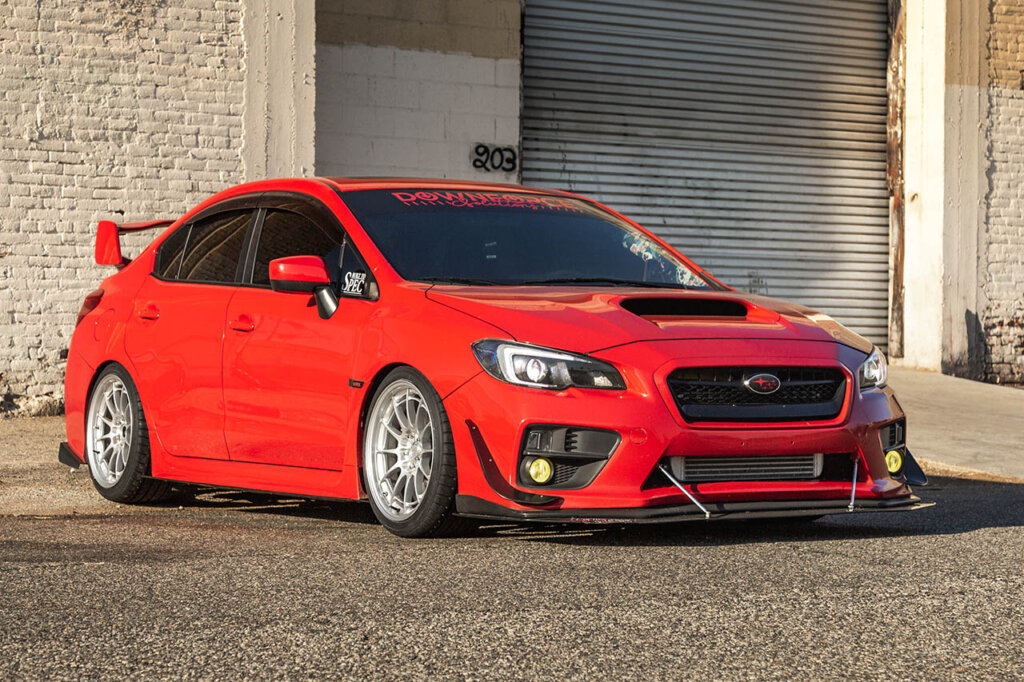
The Subaru Impreza WRX, a name that reverberates with performance enthusiasts and automotive aficionados alike, stands as a testament to Subaru’s unwavering commitment to engineering excellence. Since its debut in 1992, the Impreza has carved out a distinctive place in the hearts of drivers worldwide. Renowned for its captivating blend of exhilarating performance, all-weather capability, and unwavering reliability, the Impreza has solidified its status as an automotive icon. Whether tearing through rally stages or navigating city streets with grace, the Subaru Impreza embodies the spirit of adventure and innovation, setting the bar high for compact cars in the industry.
The Birth & Rise of Impreza WRX (1992-2014)
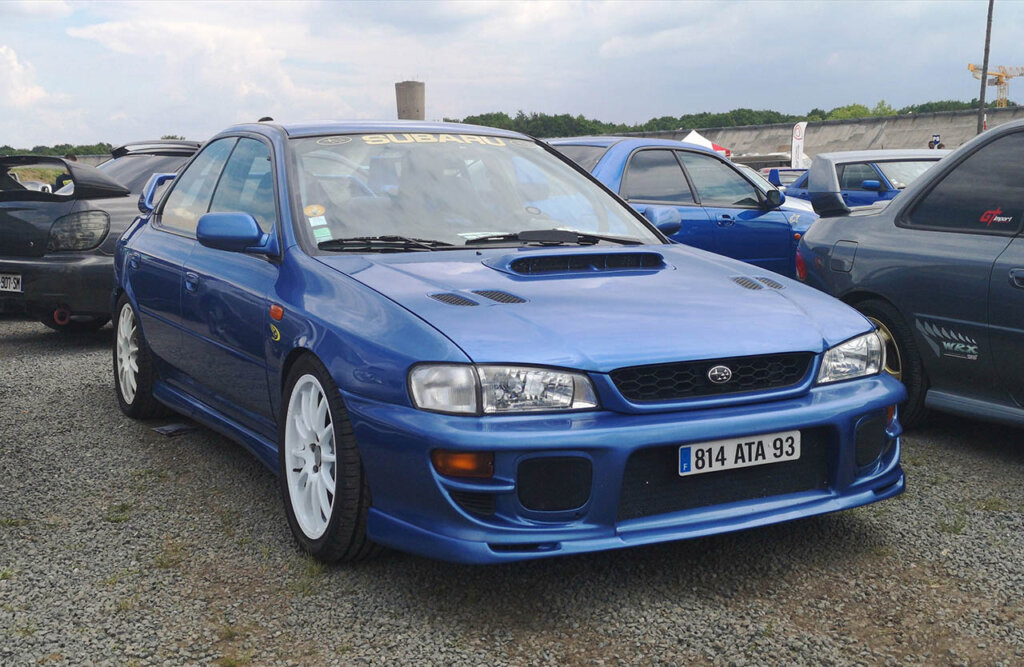
Source: crash71100 via Flickr
| Trim | Production | Engine | Power | Transmission | Drivetrain |
| GC8A/GC8B (WRX STI Version) | 1992 – 1994 | 2.0L EJ20 Turbocharged Boxer-4 | 237 – 247 HP / 240 – 250 PS / 176 – 184 kW | 5-Speed Manual 4-Speed Automatic | AWD |
| GC8C (Version II) | 1994 – 1996 | 2.0L EJ20 Turbocharged Boxer-4 | 256 HP / 260 PS / 191 kW | 5-Speed Manual 4-Speed Automatic | AWD |
| GC8D (Version III) | 1996 – 1997 | 2.0L EJ20 Turbocharged Boxer-4 | 276 HP / 280 PS / 206 kW | 5-Speed Manual 4-Speed Automatic | AWD |
| 22B STI GC8E/GC8F/GC8G (Version IV/V/VI) | 1997 – 1998 | 2.0L EJ20 Turbocharged Boxer-4 | 276+ HP / 280+ PS / 206+ kW | 5-Speed Manual 4-Speed Automatic | AWD |
In October 1992, Subaru introduced the world to the Subaru Impreza. The car offered a range of options including front-wheel drive (FWD) or all-wheel drive (AWD) versions, as well as four-door sedan or five-door wagon (Touring) models. Built on a shortened version of the Legacy’s floor pan, the Impreza showcased Subaru’s commitment to the use of the boxer engine configuration, which provided improved balance and a lower center of gravity, resulting in enhanced handling and reduced body roll. Initially, the Impreza was planned to be named the Loyale, but it was officially named Impreza before its release. Over the years, the Impreza expanded its lineup with the introduction of a two-door coupe and various engine options ranging from 1.5 to 2.0 liters.
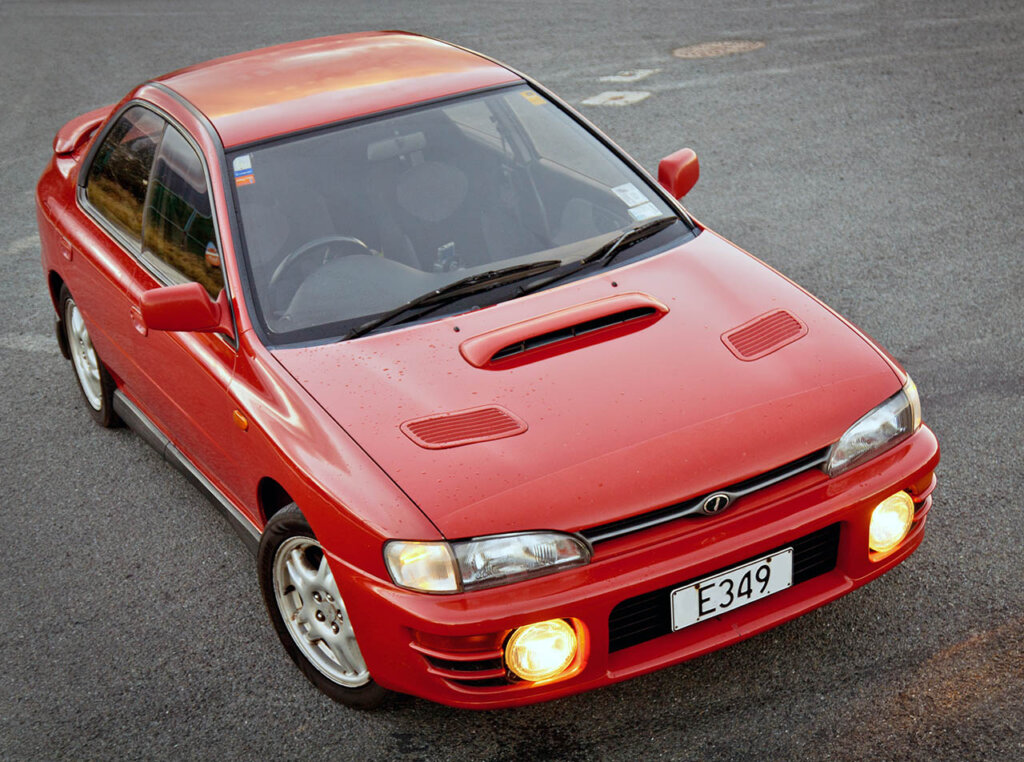
Source: Aidan via Wikipedia
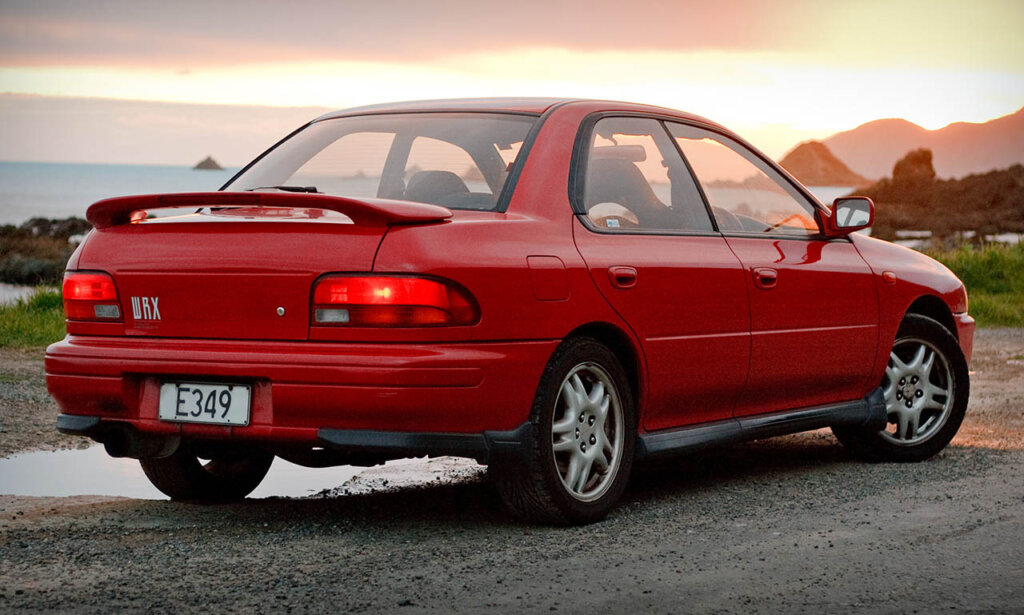
Over time, the Impreza received exterior facelifts and interior redesigns, with updates in the 1997 and 1998 model years. Subaru’s emphasis on all-wheel drive expanded in North America, making it a standard feature on all Impreza models starting in 1997. While the first generation of Impreza didn’t include the WRX version in North American markets, Subaru showcased a turbocharged Impreza called the 2.5RX at various car shows to gauge interest. The performance-oriented 2.5RS was introduced in 1998, featuring a naturally aspirated 2.5-liter engine, larger brakes, and styling cues from its overseas counterparts. The 1999 model brought additional updates, including an updated front bumper similar to the Japanese Version 5 Impreza WRX STI.
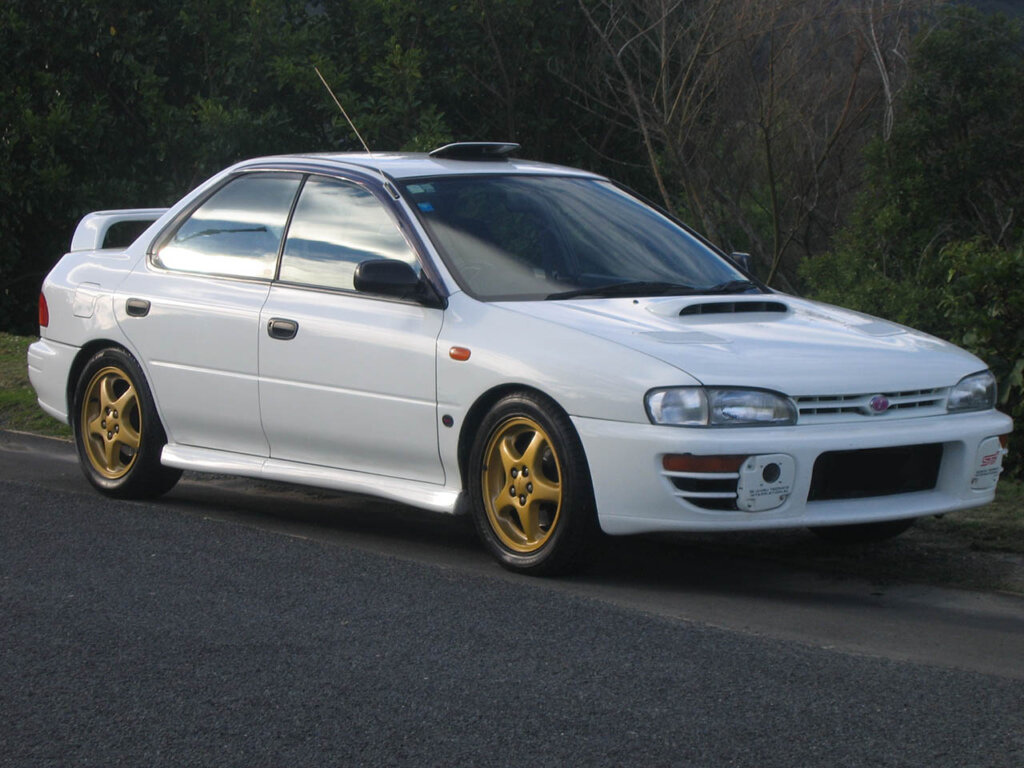
Source: Mr Bungle via Wikipedia
WRX & WRX STi Line
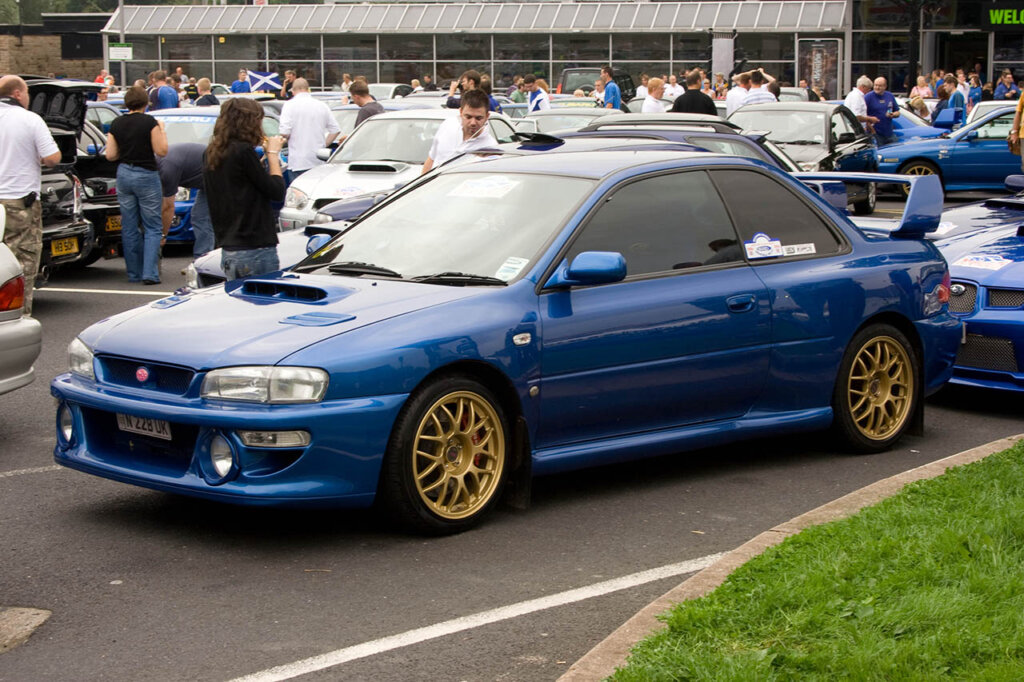
Source: Stephen Hynds via Flickr
The Subaru WRX has a rich history spanning seven notable versions, with its origins rooted in Subaru’s World Rally Cross staging vehicles. The acronym “WRX” stands for “World Rally eXperimental,” signifying the rally-inspired technology present in all WRX models. These vehicles feature all-wheel drive, enhanced suspensions, and turbocharged four-cylinder engines. The STi versions, distinguished by consecutive numbers, offered even higher performance and were renowned for their success in rallies. The WRX versions produced between 1992 and 2000 can be identified by the chassis code GC8 for sedans and GF8 for hatchbacks, followed by a letter from A to G. In the United States, the coupe versions had a separate chassis code of “GM.”
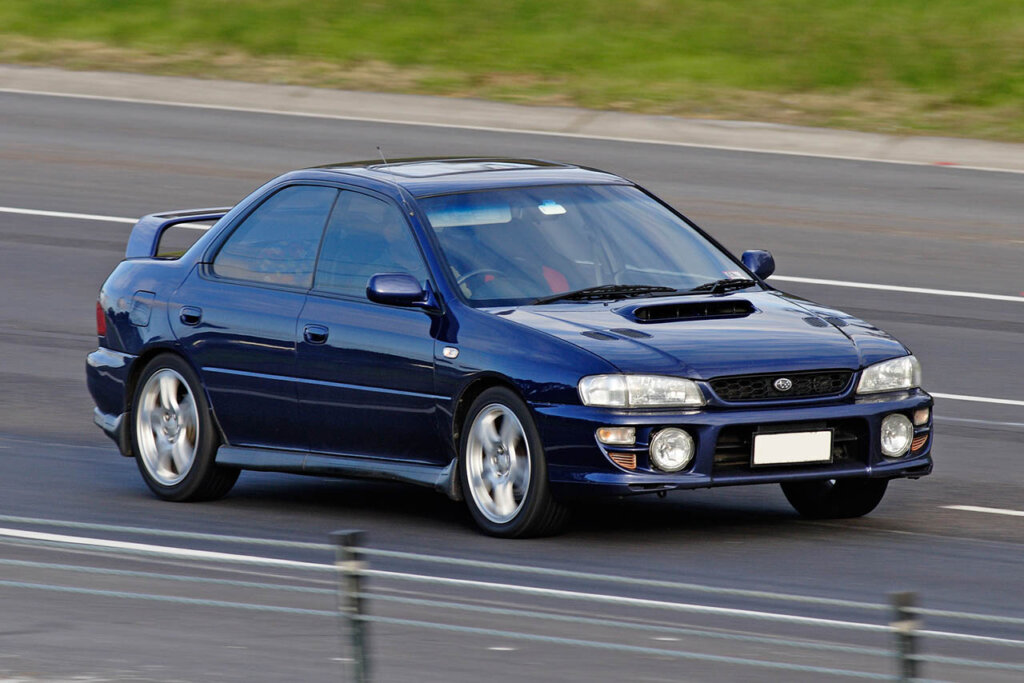
Source: Fir0002 via Wikipedia
In 1994, Subaru introduced Subaru Tecnica International (STi badged) versions of the WRX exclusively in Japan. These models received significant upgrades compared to the standard WRX, featuring meticulously tuned engines, transmissions, and suspensions. While the WRX found popularity among street racers and enjoyed success in rallies, the STi variants took performance to the next level. It’s worth noting that STi had been preparing Subaru rally cars since 1988, but the WRX STi Version was the first model to feature an actual STi badge and receive dedicated handcrafted tuning. Unfortunately, the STi versions were limited to the Japanese market and not available internationally.
Second generation (2000-2007)
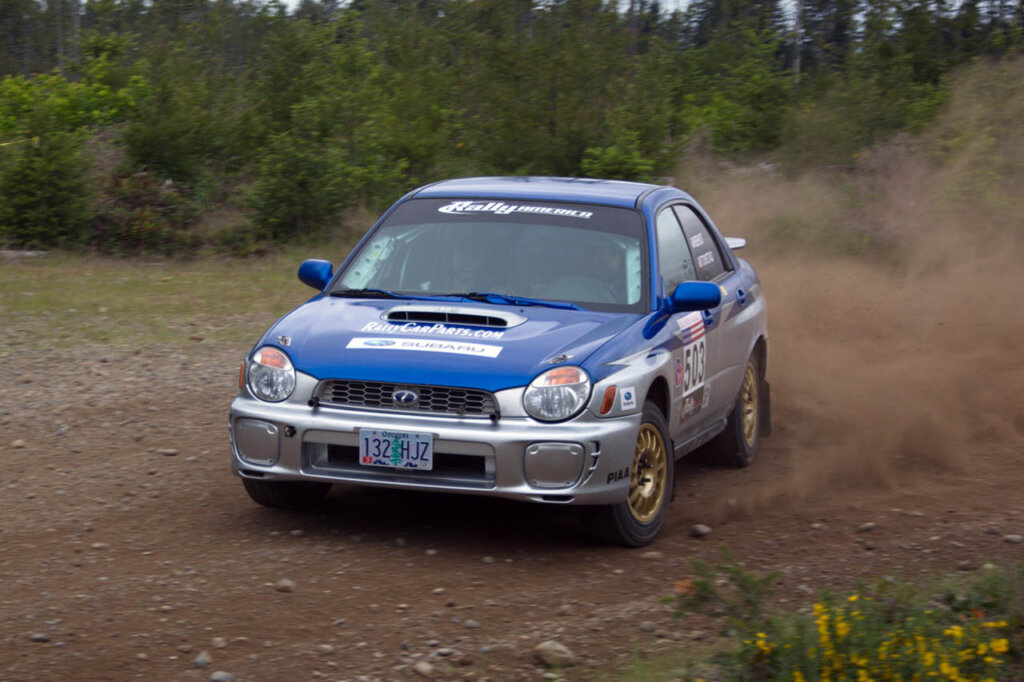
| Trim | Production | Engine | Power | Transmission | Drivetrain |
| GD/GG (Base Sedan/Wagon) | 2000 – 2002 (Bug-Eye) 2002 – 2005 (Blob-eye) 2005 – 2007 (Hawk-eye) | 1.5 – 2.5L EJ NA Boxer-4 | 227 HP / 230 PS / 169 kW | 5/6-Speed Manual 4-Speed Automatic | AWD |
| Applied A | 2000 – 2001 | 2.0L EJ20 Turbocharged Boxer-4 | 247 HP / 250 PS / 184 kW | 5/6-Speed Manual 4-Speed Automatic | AWD |
| Applied B/C | 2001 / 2002 – 2003 | 2.0L EJ20 Turbocharged Boxer-4 | 227 HP / 230 PS / 169 kW | 5/6-Speed Manual 4-Speed Automatic | AWD |
| Applied D/E/F | 2004 – 2007 | 2.5L EJ25 Turbocharged Boxer-4 | 300 HP / 304 PS / 224 kW | 5/6-Speed Manual 4-Speed Automatic | AWD |
Subaru introduced the “New Age” Impreza in Japan in August 2000, featuring a larger size compared to its predecessor. The sedan grew by 40 millimeters (1.6 in), while the wagon had a slight increase of 5 millimeters (0.2 in), placing them in different Japanese classification categories. The coupe body style was discontinued, but the off-road appearance package with contrasting-colored bumpers remained. The Outback Sport, marketed separately, continued to be available in North America.
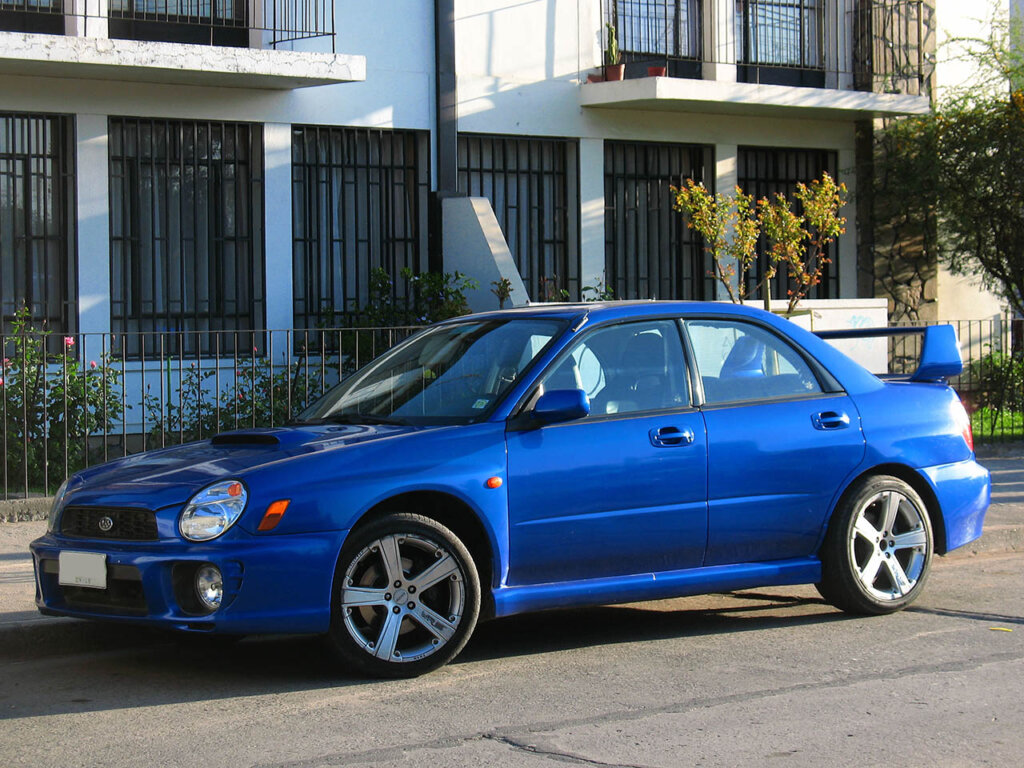
Source: RL GNLZ via Flickr
The Impreza offered a range of naturally aspirated flat-four (boxer) engines, including the 1.5-liter EJ15, 1.6-liter EJ16, 2.0-liter EJ20, and 2.5-liter EJ25. Turbocharged versions were available in the WRX and WRX STI models, with the STI featuring a more powerful turbocharged engine. Initially, the WRX models had a 2.0-liter turbocharged boxer engine, which later transitioned to a 2.5-liter turbocharged engine in 2005.
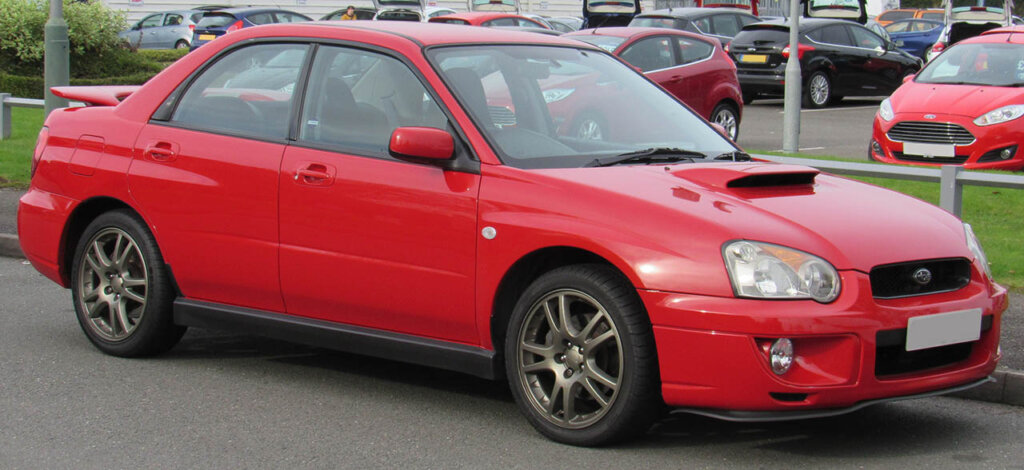
Source: Vauxford via Wikipedia
Subaru provided various specifications and limited edition models for the turbocharged WRX and WRX STI variants, catering to different preferences. The STI models received regular updates, including cosmetic enhancements, equipment upgrades, and improvements in performance and handling.
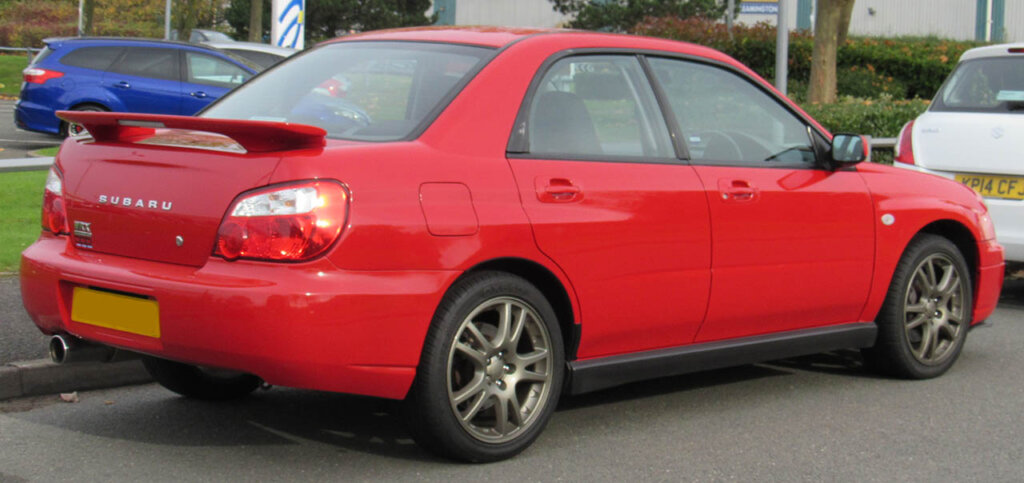
Third Generation (2007-2014)
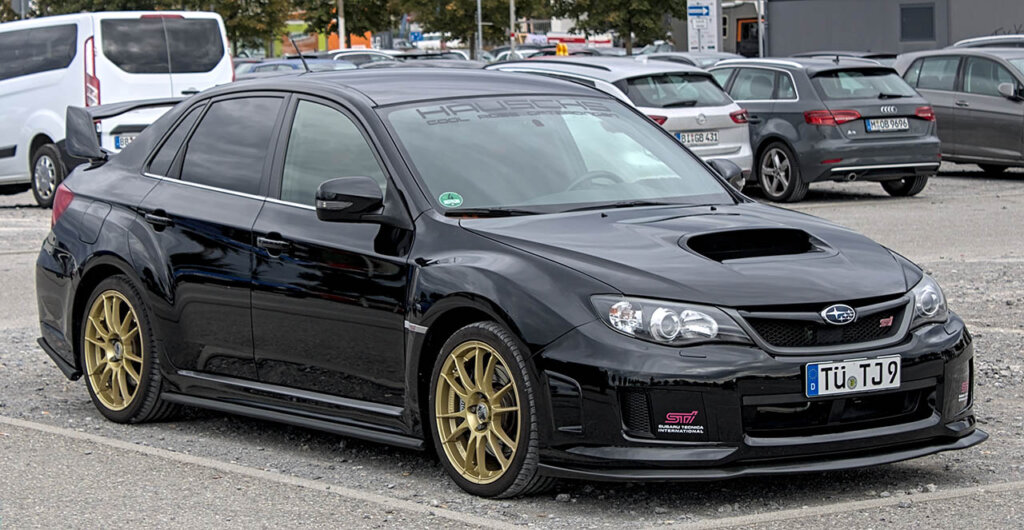
Source: Alexander Migl via Wikipedia
| Trim | Production | Engine | Power | Transmission | Drivetrain |
| GE/GH/GR/GV (Sedan/Hatch & Hatch-Widebody/Sedan-Widebody) | 2007 – 2011 | 1.5 – 2.5L EL/EJ Naturally Aspirated Boxer-4 | 107 – 170 HP / 110 – 173 PS / 80 – 127 kW | 4/5-Speed Automatic | AWD |
| WRX | 2007 – 2014 | 2.5L EJ Turbocharged Boxer-4 | 227 HP / 230 PS / 169 kW | 5/6-Speed Manual 4/5-Speed Automatic | AWD |
| WRX STI | 2007 – 2014 | 2.5L EJ Turbocharged Boxer-4 | 297 HP / 300 PS / 221 kW | 5/6-Speed Manual 4/5-Speed Automatic | AWD |
The third generation of the Subaru Impreza was unveiled at the New York Auto Show in April 2007, featuring both a standard version and the turbocharged WRX variant. The lineup expanded with the high-performance WRX STI in October of the same year. The new generation introduced a five-door hatchback initially, followed by the four-door sedan in 2008, replacing the wagon body style. Subaru focused on increasing size, stiffness, and safety features while reducing weight in the third-generation Impreza. The body was slightly longer and wider with an extended wheelbase. Changes included the adoption of MacPherson strut and double wishbone suspensions, as well as improvements to noise, vibration, and harshness levels. Subaru focused on increasing size, stiffness, and safety features while reducing weight in the third-generation Impreza. The body was slightly longer and wider with an extended wheelbase. Changes included the adoption of MacPherson strut and double wishbone suspensions, as well as improvements to noise, vibration, and harshness levels.
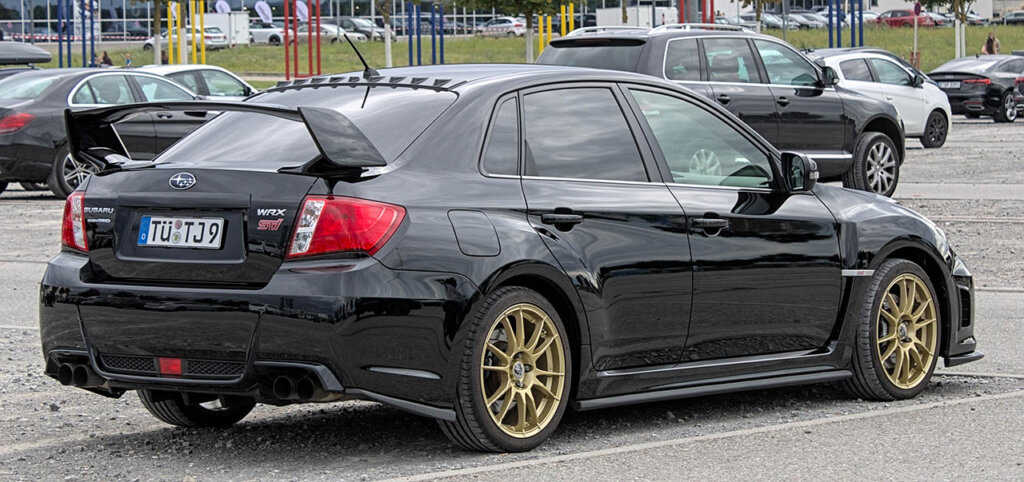
The turbocharged WRX variant, introduced alongside the standard models, featured a 2.5-liter EJ255 engine with improved airflow efficiency. It received updates in subsequent years, such as a power boost and enhanced suspension components. The WRX STI, initially launched in 2007, offered even greater performance, featuring a wider body, advanced electronic systems, and aluminum suspension parts.
